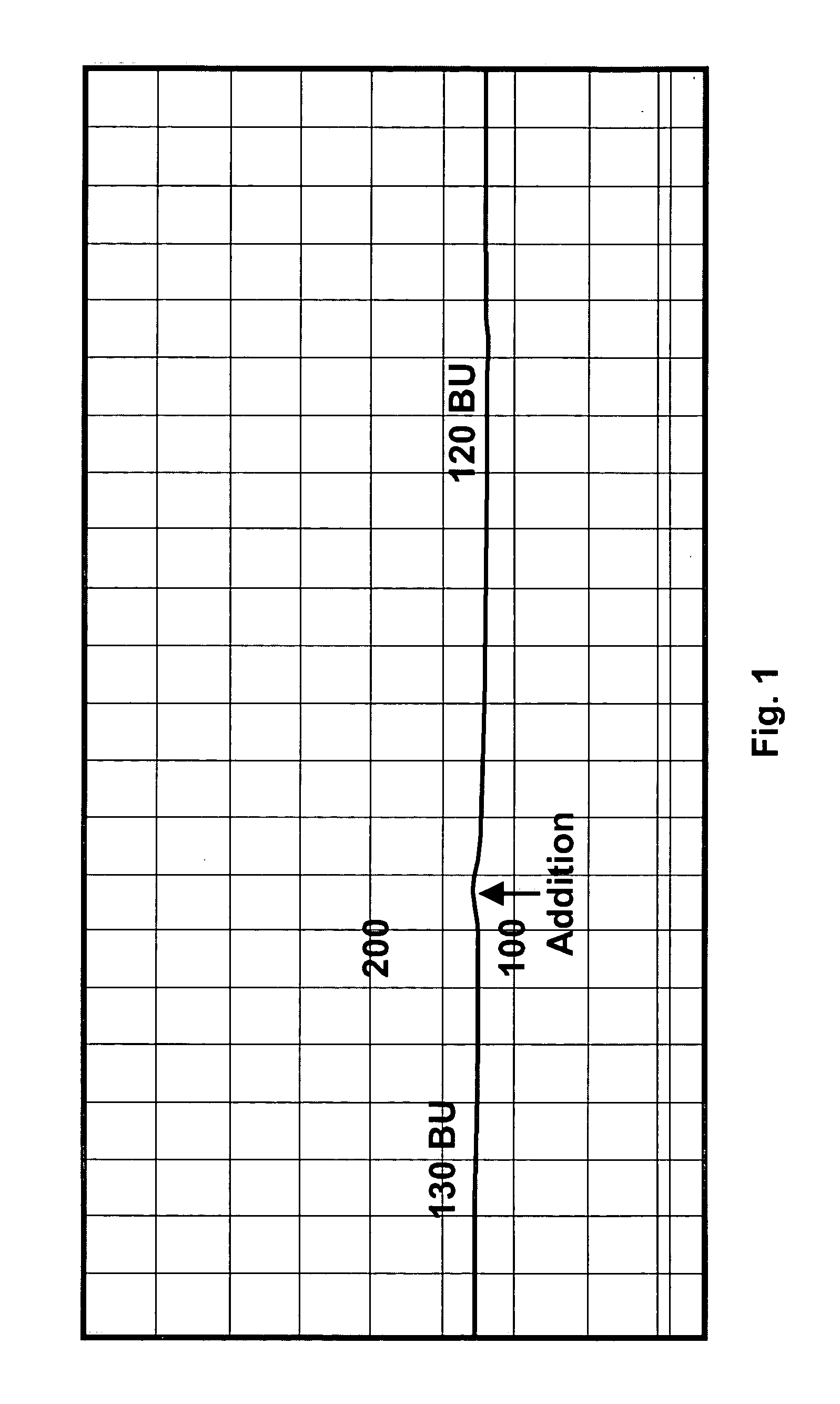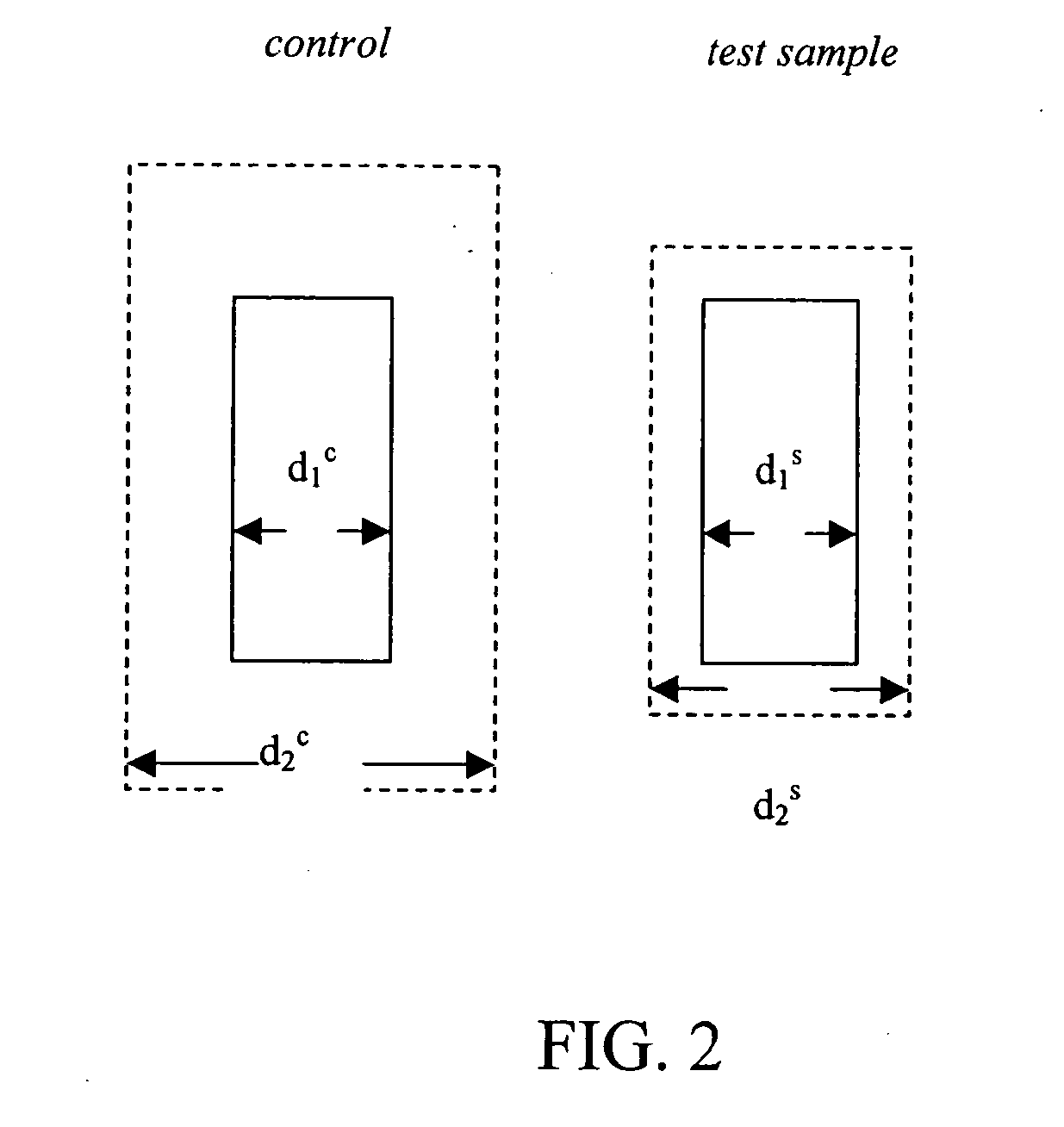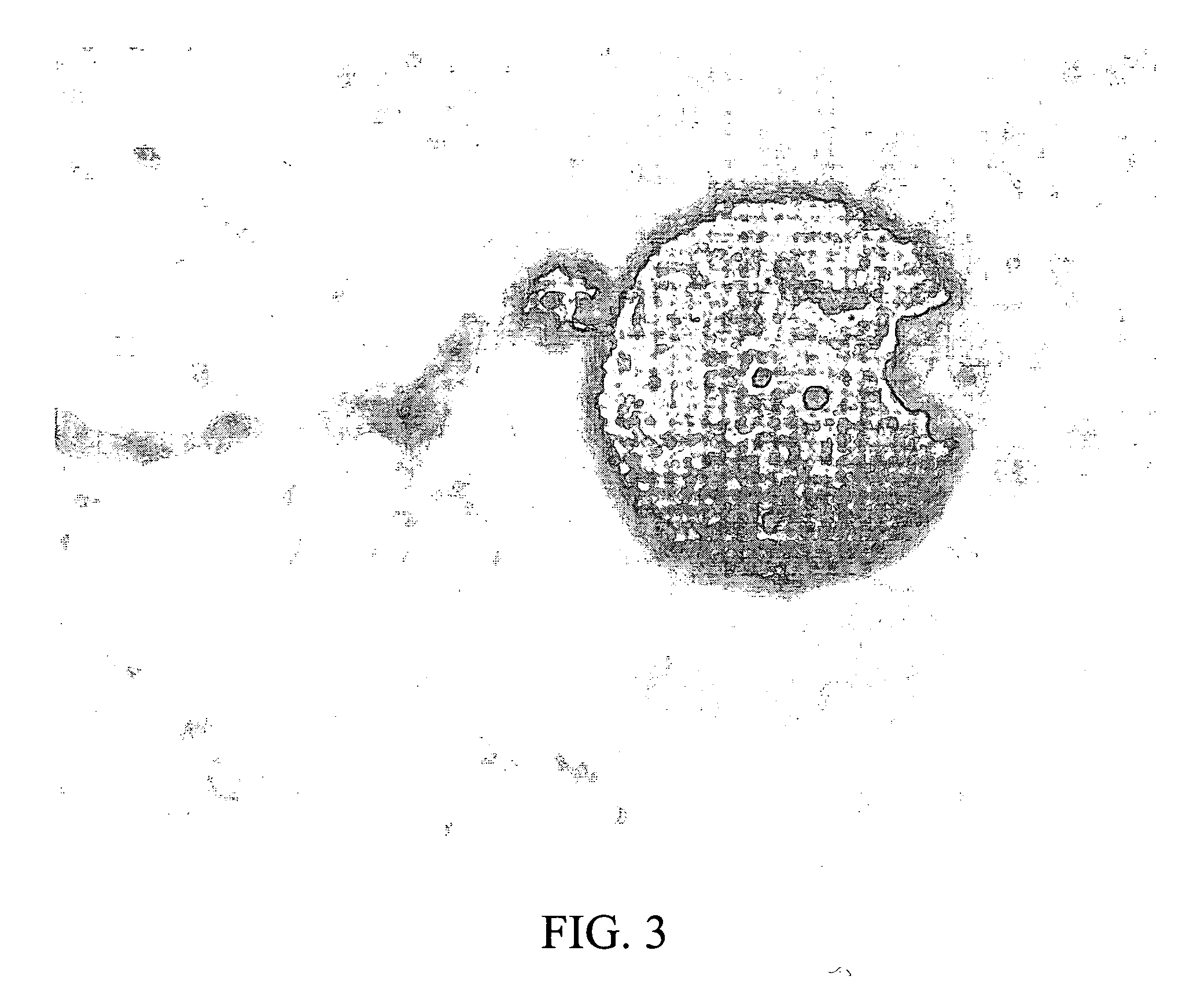Tropicalizing agent, and methods for making and using the same
a technology of tropicalizing agent and emulsifier, which is applied in the field of tropicalizing agent, can solve the problems of loss of mechanical strength of chocolate, chocolate becomes sticky or even runny, and semi-liquid mass that can often only be eaten, and achieves uniform gel bead distribution and increase the integrity and shape retention
- Summary
- Abstract
- Description
- Claims
- Application Information
AI Technical Summary
Benefits of technology
Problems solved by technology
Method used
Image
Examples
example 1
Development of Network Structure in Tropicalized Chocolates of the Invention
[0079] Tropicalizing agent was added at 40° C. to tempered chocolate at levels equivalent to various additions by weight of water as sucrose syrup and the product molded into bars. These were set at room temperature (22° C.) and then placed in a freezer at −10° C. for 30 minutes. The shape retention indices were measured after a further 24 hours at room temperature. The results (shown in Table 2) indicate that 0.5% addition of water was insufficient for the development of structure whereas good shape retention is obtained with a 1.5% addition of water.
TABLE 1Shape retention in chocolate with different additionsof water as sugar syrup in gel beads.Water addition (% by weight)0.51.01.52.0SRI (%)0359196
[0080] A small sample of the treated chocolate according to the invention was placed on a microscope and examined under 100× magnification. A network structure of rings and chains of concatenated sugar crystal...
example 2
Acceleration of Release of Syrup from Gel Beads of the Invention
[0081] Cooling the treated chocolate (or treated chocolate analogue), e.g., to −10° C., greatly increases the rate of development of shape retaining characteristics. Tropicalizing agent was added at 40° C. to tempered chocolate at a level equivalent to addition of 1% by weight of water as sucrose syrup and the product was molded into bars. These were set at 12.5° C. and then equal numbers were placed in a freezer and cooled to −10° C. or retained in the refrigerator at 12.5° C. for 30 minutes. The shape retention indices were then measured. The bars held at −10° C. had very much better shape retention than those held at +12.5° C., as shown in Table 3. After 12 days storage under ambient conditions (ca 22° C.) the shape retention indices were more equal, but the bars held at −10° C. for 30 minutes still retained better shape retention characteristics.
[0082]FIG. 3 illustrates an image of a gel bead during fat crystalliz...
example 3
Shape Retention Based on Length of Cooling Time of the Invention
[0083] Tropicalizing agent prepared per Example 1 was added to tempered chocolate at 40° at a level equivalent to addition of 1.5% water as sugar syrup and the product molded into bars. These were set at 12.5° C. and then placed in a freezer at −10° C. for different lengths of time (as shown in Table 3). The shape retention index (SRI) reached its maximum value within 15 minutes, as shown in Table 4.
TABLE 4Effect on shape retention of different holding times at −10° C. forchocolate treated with tropicalizing agent delivering an equivalent1% by weight addition of water as sucrose syrup.Time at −10° C. (minutes)15304560SRI (%)97989796
PUM
 Login to View More
Login to View More Abstract
Description
Claims
Application Information
 Login to View More
Login to View More - R&D
- Intellectual Property
- Life Sciences
- Materials
- Tech Scout
- Unparalleled Data Quality
- Higher Quality Content
- 60% Fewer Hallucinations
Browse by: Latest US Patents, China's latest patents, Technical Efficacy Thesaurus, Application Domain, Technology Topic, Popular Technical Reports.
© 2025 PatSnap. All rights reserved.Legal|Privacy policy|Modern Slavery Act Transparency Statement|Sitemap|About US| Contact US: help@patsnap.com



